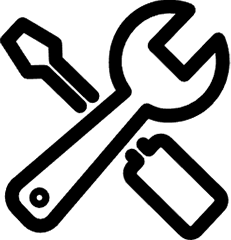By Bethanie Hestermann
Do you have an outdoor adventure or two on your calendar? If so, read this first! No one likes to dwell on what could go wrong, but everyone can benefit from putting some thought into an emergency plan of action before heading off the grid. With some basic prep, you can enjoy your camping/overlanding adventure and rest assured that if something unforeseen happens, you’ve got what you need.
Best Practices for Staying Safe
From sharing your trip plan with someone back home to bringing more water than you think you need, here are some things you should be doing to make sure you and everyone else in your adventure party comes home safely.
- Have a plan. Even if it’s a loose plan, knowing where you’re going and when can help you avoid getting lost and help you pack appropriately (aka, you’ll have the right gear, the right amount of food/fuel, etc.).
- Tell someone where you’re going. Share your itinerary, including trip dates and location(s) with one or two people who are not coming with you. That way, someone knows where you’re supposed to be.
- Bring extra water. Even if you’re camping in a place with potable water or traveling on the road with access to gas stations and grocery stores, put some extra water in your car. As a general rule, you should bring more water than you think you need, just in case.
- Drive carefully, especially when winding mountain roads are involved. Motor vehicle crashes account for about one-third of unintentional deaths in U.S. National Parks, according to the National Park Service.
- Don’t underestimate Mother Nature, and don’t overestimate your abilities. Drowning and falls, along with motor vehicle crashes, make up the top three causes of unintentional deaths in U.S. National Parks. (Also, please don’t do something dangerous for the sake of a selfie.)
Invest in Emergency Gear
Even if you follow all the best practices in the world, accidents happen. When they do, it’s a good idea to have some emergency gear on hand. Consider these options as you build your own personal emergency kit:
- Survival tool kit, including things like a hand crank flashlight, whistle, multi-purpose tool, fire starting supplies, extra batteries, emergency thermal blanket(s), emergency shelter or tarp and cord, etc.
- Emergency first aid kit (Adventure Medical Kits has many good options)
- Extra gauze (QuickClot or something similar to supplement what’s in your first aid kit)
- Tourniquet
- Solar-powered device charger
- Satellite messenger device
- Portable water filtration system (LifeStraw, Sawyer MINI filter, etc.)
Beyond these essentials, you may want to personalize your emergency gear depending on the places you go, the current weather/season, the people you adventure with, and the types of activities you do—whether it’s mountain climbing, backpacking, water sports, or something else. If you’re adventuring with pets or children, consider what needs they have when you build your emergency kit.
Be A Responsible Adventurer
Investing time and money in emergency prep can feel about as exciting as replacing the tires on your car or buying a vacuum. But it’s an essential part of being a responsible adventurer. And now that you’re prepared for the worst, you can turn your attention to the fun stuff!







